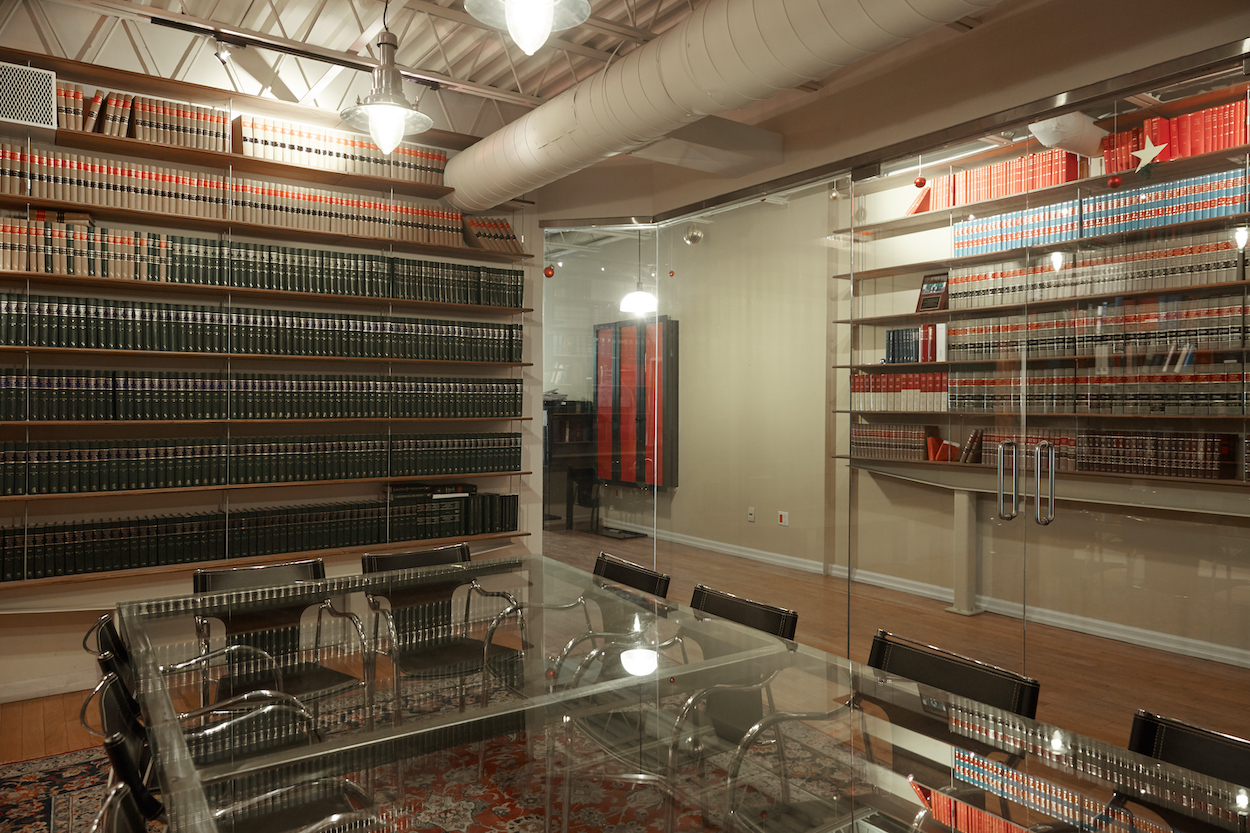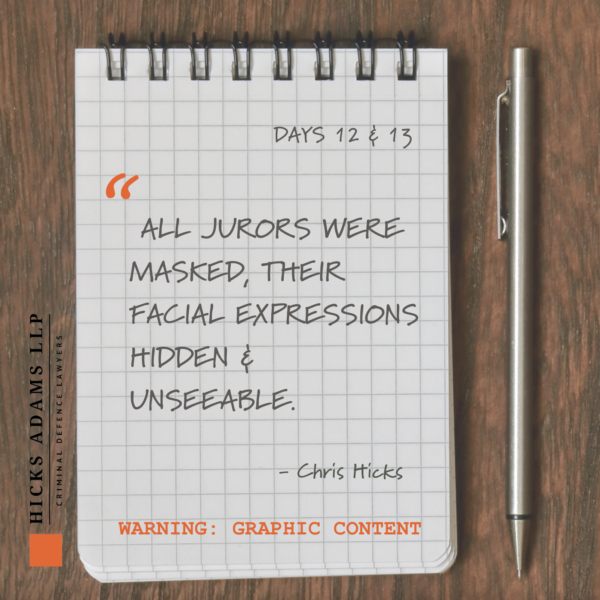Criminal defence lawyer and partner at Hicks Adams LLP Christopher Hicks has written a series of journal entries to take readers behind the scenes of something few people have exposure to: a trial for first-degree murder. In these journals, readers will experience the daily progress of a trial from the defence lawyer’s point of view, with the lawyer’s perspective on everything including witness testimony, judicial rulings and legal strategy.
Making this series especially unique is the fact that this is the first jury trial to go forward in Ontario after the start of the Covid-19 pandemic. With new safety protocols in place, everything is different from the placement of the jury, the lack of observers in the public gallery and even the freedom of movement for the lawyers.
In a nine-part series, Christopher Hicks will take readers through the highly unusual process of running a murder trial during a pandemic, providing rare insights and information as you follow along on the journey from start to finish. See previous installments by clicking on the links below:
Part 1; Part 2; Part 3; Part 4
Warning: This post contains graphic descriptions that may be difficult for sensitive readers.
DAY 12
Amanda Wells testified that she had been with Robbie McGregor for 5 years. She said that on the evening of July 1, she had seen Joanne MacKenzie and Jessup together at a Canada Day fireworks display. She told Robbie McGregor about this and he instructed her to contact Joe Williams to ask him to assault the couple.
When questioned by investigators, Wells maintained that the messages sent to Joe Williams were her words and not those of Robbie McGregor. Asked about Robbie McGregor’s role in her arrest, she remained silent or denied he had a role, and later even confessed to the charges against her.
It was not until the preliminary inquiry for Robert McGregor that Wells said the plot to harm Joanne and Jessup was all Robbie McGregor’s idea. She adopted this version of events at Robbie McGregor’s trial, where she presented as a woman under the influence of drugs.
Evidence that Robbie McGregor wanted to harm Joanne the evening before she disappeared was obviously damaging to him. It assisted the jury in reaching the conclusion that Robbie McGregor actually intended to kill Joanne MacKenzie. This would make Robbie McGregor guilty of murder, and not manslaughter, as the defence hoped the jury would find.
DAY 13
The noted pathologist Dr. Michael Pollanen testified about the autopsy he performed on the partially decomposed body of Joanne MacKenzie.
The lethal blow was a stab wound to the left side of her neck. It was not deep, but it severed two major arteries, the carotid and vertebral. Dr. Pollanen could not give precise times, but this one stab wound would have commenced a rapid decline into unconsciousness and death.
Another stab wound, to Joanne MacKenzie’s right chest above her breast, was potentially lethal because it punctured her lung. However, the wound path revealed no blood, which meant the blow was inflicted when Joanne MacKenzie was in a state of either perimortem (near death) or postmortem (after death).
These were two stabs out of a total of fifteen. All were delivered to her torso, front and back, and her arms and neck. Two more of these blows were also delivered when Joanne MacKenzie was either perimortem or postmortem.
The only incised, or slicing, wound was to Joanne MacKenzie’s throat. Dr. Pollanen said this wound was very shallow and had not damaged any organs, such as her voice box, directly below her skin. It was dramatically clear to the jury that this incision meant that Joanne MacKenzie’s throat had been slit.
In every jury trial that I have conducted the jury sat together, shoulder to shoulder, two rows of six, in the jury box. In this trial, the 14 jurors were socially distanced throughout a large courtroom designed to minimize any chance of contagion from the Covid-19 virus.
Customarily I work close to the jury box to better read the jury, but in this trial, I had to stand at a Plexiglas-enclosed podium and not move, twelve feet away from the closest juror. All jurors were masked, their facial expressions hidden and unseeable.
Despite the distance and the masks, the impact of the evidence of a slit throat was palpable. It sent a shudder through the members of the jury and their reaction of repulsion was unmistakable. The slit throat was a perimortem or postmortem infliction which could not have contributed to Joanne MacKenzie’s death, but it was redolent of hatred and vengeance and spoke volumes about the intention to kill.
The ambience of the courtroom was changed for the remainder of the trial, and the remainder of the trial consisted solely of evidence called in the defence of Robbie McGregor.
Stay tuned for future installments in this series, which will be posted every Monday.
Christopher Hicks is one of the founding partners of the criminal law firm of Hicks Adams. He has been practicing criminal law for more than two and a half decades, with a special interest, and extensive experience, in jury trials and appeals. In the course of his career, Christopher has been involved in scores of jury trials involving the most serious crimes in the criminal code, has argued appeals of both conviction and sentence in the court of appeal on a regular basis, and has represented clients in the Supreme Court of Canada on more than a half dozen occasions.
To reach Christopher or any of the experienced and dedicated criminal lawyers at Hicks Adams, contact the firm at 416-975-1700 or online to discuss your matter in confidence.



